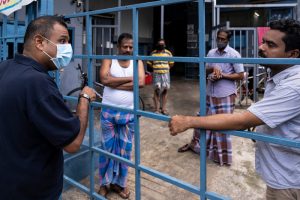Singapore, as one of the most developed nations not only in Asia but throughout the lists of global high ranking nations, was initially a primary example in the curbing of the spread of the disease within its borders.
The World Health Organization lauded its very aggressive contact tracing methodology which let the whereabouts of the contagion known more quickly, without hesitation. This was the reason why Singaporean institutions, both economic and educational were open throughout the pandemic. However, this was not to be, as cases that were stagnant in three-digits at the beginning of April now tolls at an unbelievable number of 17,000, the largest number in Southeast Asia. Considering its rather small national territories and the relatively small population, this indeed is a great turn of events.
The reason behind the exponential growth? Their dormitories of immigrant workers, separated from the wealthy Singaporean culture complexes, where 300,000 out of 1 million foreign nationals live like chickens in hen coops.
“We have started our testing with the dormitories where there were a high number of cases detected,” Singapore health minister Gan Kim Yong said in a press conference. S The eventual lockdown started from April 7, and officials have now located the source of the problem in these ghettos.
They are treating 3,000 a day of these workers and hopes to expand the number of testees. “For dormitories where the assessed risk of infection is extremely high, our efforts are focused on isolating those who are symptomatic even without a confirmed COVID 19 test,” Gan says.
“This allows us to quickly provide medical care to these patients.”
Health minister Gan have said that the rigorous tests revealed workers who are infected with SARS-CoV2 but was apparently asymptomatic.
“So far, the majority of the cases here have had relatively mild disease or no symptoms. And they do not require extensive medical intervention,” Gan said. “About 30 percent require closer medical observation due to the underlying health conditions or because of old age.
” However, there needs to be a change in policy as well as for the current testing of these workers, as their poor living condition have brought up to surface not only the dangers of the contagion, but the disparate social class differences that were hidden behind the glorious effects of the Singaporean economy.
If you liked this article, please LIKE SHARE AND COMMENT below! And don’t forget to check our other articles along the way!
Replaced!





